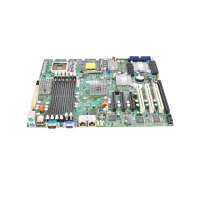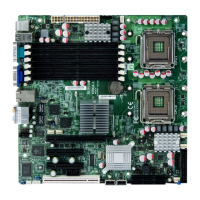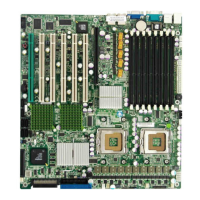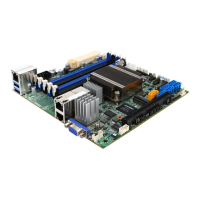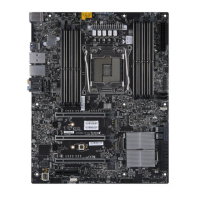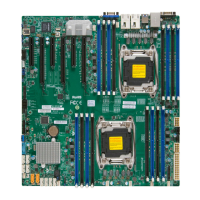4-10
X7DCU User's Manual
XAdvanced Chipset Control
Access the submenu to make changes to the following settings.
Warning: Take caution when changing the Advanced settings. An Incor-
rect value, a very high DRAM frequency or an incorrect DRAM timing may
cause system to become unstable. When this occurs, reset the setting to
the default setting.
Clock Spectrum Feature
If Enabled, the BIOS will monitor the level of Electromagnetic Interference caused
by the components and will attempt to decrease the interference whenever needed.
The options are Enabled and Disabled.
Crystal Beach Features
Select Enabled to use the Intel I/O AT (Acceleration Technology) to accelerate the
performance of TOE devices. (Note: A TOE device is a specialized, dedicated pro-
cessor that is installed on an add-on card or a network card to handle some or all
packet processing of this add-on card. For this motherboard, the TOE device is built
inside the ESB 2 South Bridge chip.) The options are Enabled and Disabled.
SERR Signal Condition
This setting specifi es the ECC Error conditions that an SERR# is to be asserted.
The options are None, Single Bit, Multiple Bit, and Both.
4GB PCI Hole Granularity
This feature allows you to select the granularity of PCI hole for PCI slots. If MTRRs
are not enough, this option may be used to reduce MTRR occupation. The options
are: 256 MB, 512 MB, 1GB and 2GB.
Channel 0 Rank Sparing/Channel 1 Rank Sparing
Select Enable to enable the function of memory sparing for Memory Bus Branch 0
or Branch 1. The options are Enabled and Disabled.
Enhanced x8 Detection
Select Enabled to enable Enhanced x8 DRAM UC Error Detection. The options
are Disabled and Enabled.
Demand Scrubbing
Scrubbing is a process that allows the North Bridge to correct correctable memory
errors found on a memory module. When the CPU or I/O issues a demand- read
command, and the read data from memory turns out to be a correctable error, the
error is corrected and sent to the requestor (the original source). Memory is updated
as well. Select Enabled to use Demand Scrubbing for ECC memory correction.
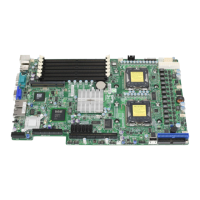
